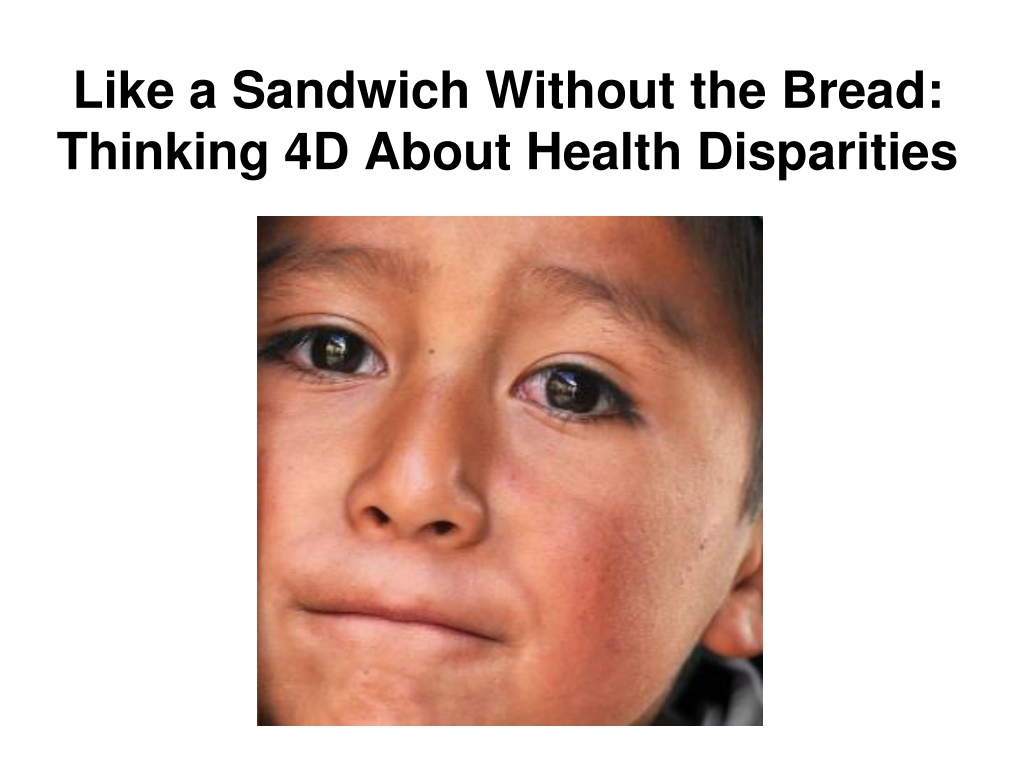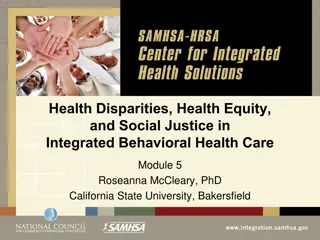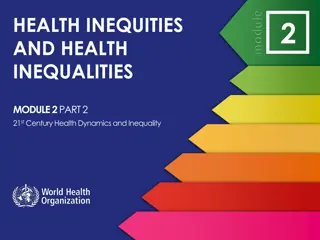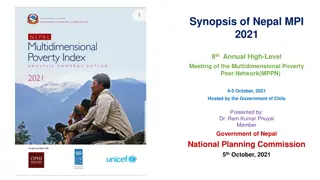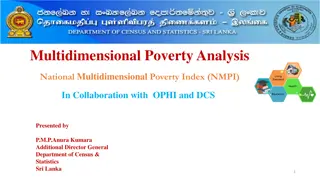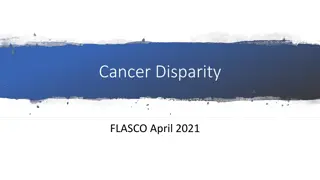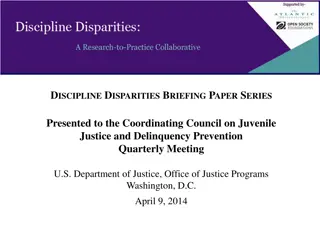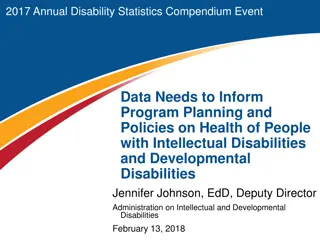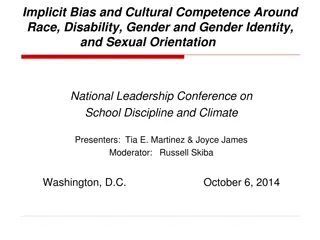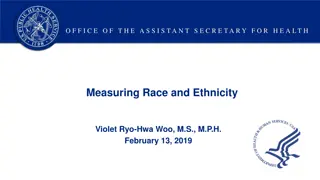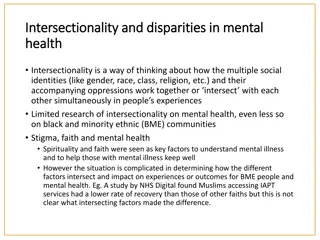Exploring Health Disparities in 4D: A Multidimensional Perspective
This presentation delves into the complexities of health disparities, particularly focusing on racial and ethnic differences in healthcare quality. It discusses factors such as implicit bias, cultural competence, and social determinants that contribute to unequal treatment in medical settings. The statistics highlighted illustrate ongoing challenges faced by African American and American Indian/Alaska Native populations. The presentation encourages critical thinking to address these disparities effectively.
Download Presentation

Please find below an Image/Link to download the presentation.
The content on the website is provided AS IS for your information and personal use only. It may not be sold, licensed, or shared on other websites without obtaining consent from the author. Download presentation by click this link. If you encounter any issues during the download, it is possible that the publisher has removed the file from their server.
E N D
Presentation Transcript
Like a Sandwich Without the Bread: Thinking 4D About Health Disparities
Washington Medical Commission 2019 Conference James Anderson, PA-C Evergreen Treatment Services, Seattle, WA jimanderson@evergreentx.org Commissioner, Washington Medical Commission
Missing Links? Why are disparities growing, despite efforts?
Defining Racial and Ethnic Healthcare Disparities The IOM study committereve defines disparities in healthcare as racial or ethnic differences in the quality of healthcare that are not due to access related factors or clinical needs, patient preferences, and appropriateness of intervention.
Thinking 4-D: Four Dimensions of Health Inequites/Disparities Access to care Provider Attitudes (Cultural Competence, Implicit Bias Systems Quality Social Determinants
Banaji https://www.youtube.com/watch?v=ZWa09tUzq f4
Statistics Infant mortality rates for African Americans and American Indian/Alaska Natives have improved some, but continue to be higher than whites African American women four times more likely than white women to die during childbirth/complications during pregnancy Patients of color receive unequal treatment when being treated at the same facility by the same providers
McGurk Effect https://youtu.be/G-lN8vWm3m0
OK, Now What? Which Ones Can You Impact as a Provider? Socioeconomic conditions Education Occupation Income Place of residence Age Culture Language Access to health care Quality of care Insurance coverage Genetics Personal behavior Provider Beliefs and Behaviors Patients Beliefs and Behaviors
Perspective Taking Taking the perspective of another person is the ability to understand how a situation appears to another person and how that person is reacting cognitively and emotionally to the situation. It is the ability to put oneself in the place of others and recognize that other individuals may have points of view different from one s own.
Perspective Taking Empathy Trumps Bias Neural Pathway What s it like to be this patient?
